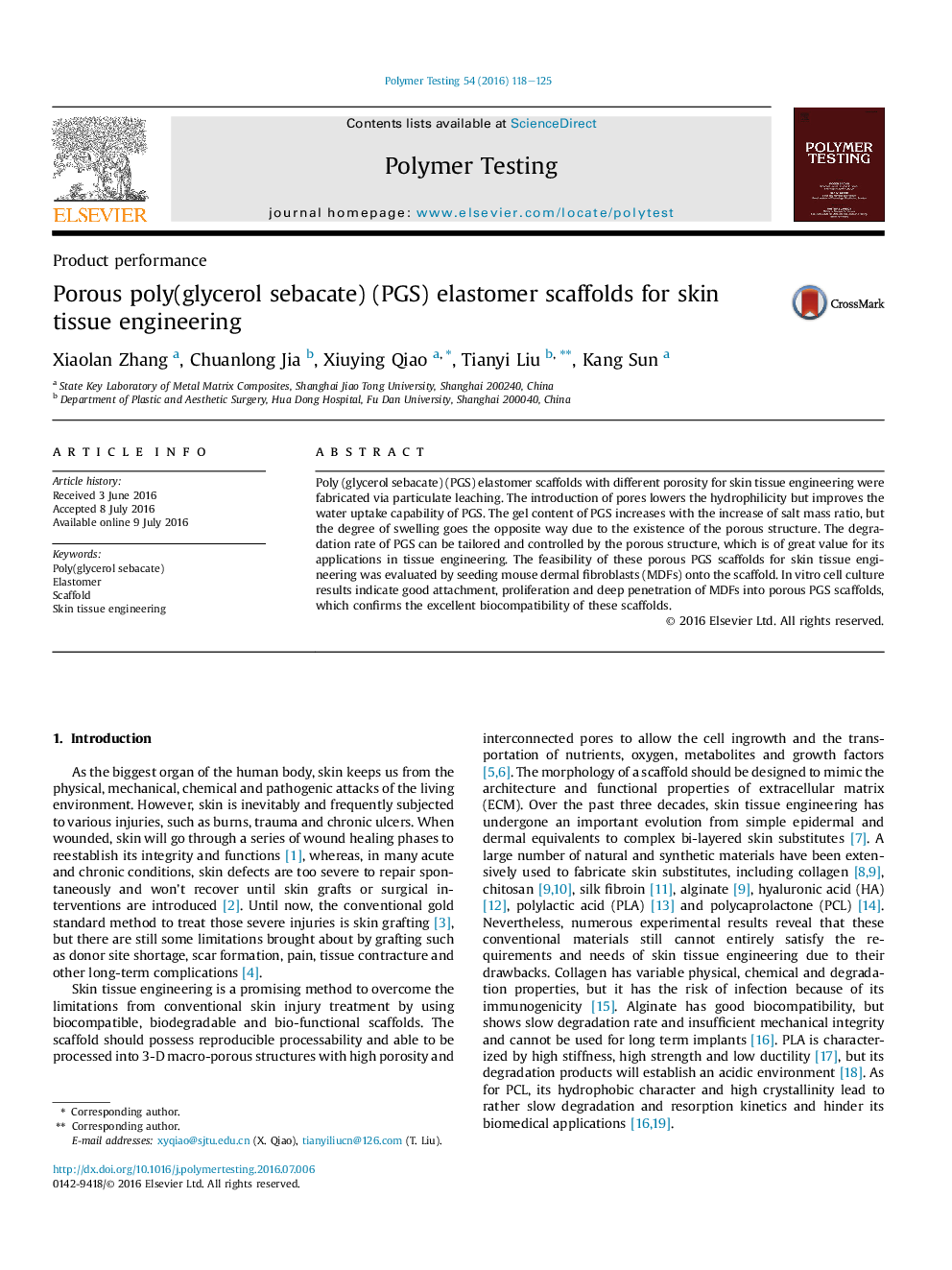| Article ID | Journal | Published Year | Pages | File Type |
|---|---|---|---|---|
| 5205885 | Polymer Testing | 2016 | 8 Pages |
Poly (glycerol sebacate) (PGS) elastomer scaffolds with different porosity for skin tissue engineering were fabricated via particulate leaching. The introduction of pores lowers the hydrophilicity but improves the water uptake capability of PGS. The gel content of PGS increases with the increase of salt mass ratio, but the degree of swelling goes the opposite way due to the existence of the porous structure. The degradation rate of PGS can be tailored and controlled by the porous structure, which is of great value for its applications in tissue engineering. The feasibility of these porous PGS scaffolds for skin tissue engineering was evaluated by seeding mouse dermal fibroblasts (MDFs) onto the scaffold. In vitro cell culture results indicate good attachment, proliferation and deep penetration of MDFs into porous PGS scaffolds, which confirms the excellent biocompatibility of these scaffolds.
